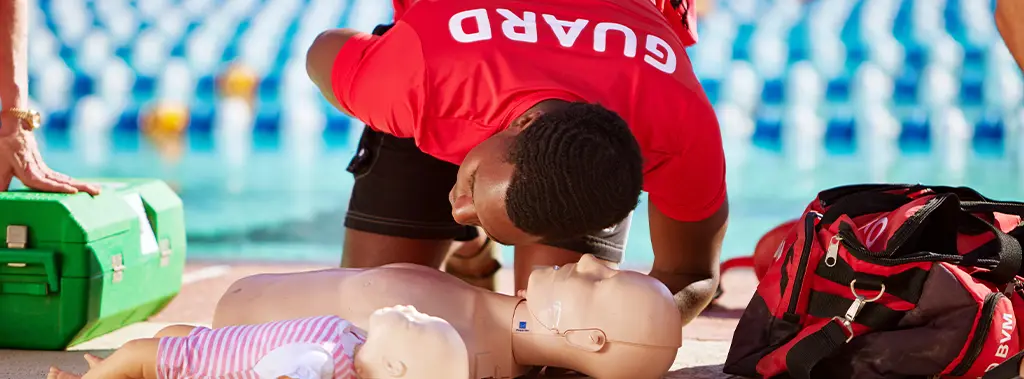Lifeguarding is a noble profession that demands a unique blend of skills, knowledge, and responsibility. Lifeguards play a critical role in ensuring the safety of individuals in aquatic environments, from swimming pools to beaches. The best way to become a certified lifeguard is through a comprehensive lifeguard class, such as those offered by the American Lifeguard Association (ALA). This article delves into what a lifeguard class entails, the importance of certification, and why the ALA stands out as the best choice for aspiring lifeguards.
What is a Lifeguard Class?
A lifeguard class is a structured training program designed to equip participants with the necessary skills and knowledge to perform lifesaving duties effectively. These classes typically cover various topics, including water rescue techniques, first aid, CPR (cardiopulmonary resuscitation), and the principles of effective surveillance in aquatic settings.
The ALA offers a comprehensive curriculum that not only prepares students for real-world scenarios but also instills confidence and competence in their abilities.
Key Components of Lifeguard Classes
- Water Rescue Techniques: This is the core of lifeguard training. Participants learn how to perform different types of rescues, including reaching, throwing, wading, and swimming rescues. The focus is on both the safety of the lifeguard and the victim.
- CPR and First Aid: Knowing how to administer CPR and basic first aid is crucial for any lifeguard. The ALA’s lifeguard classes emphasize these skills, ensuring that participants can respond effectively to emergencies.
- Surveillance and Prevention: Lifeguards must be vigilant in their duties. Classes teach how to identify potential hazards, recognize distressed swimmers, and take preventive measures to ensure safety.
- Communication Skills: Effective communication is vital in a lifeguard’s role. Training includes how to communicate with the public, fellow lifeguards, and emergency services.
- Physical Fitness: Lifeguarding is physically demanding. Classes often include fitness assessments and training to help participants meet the physical requirements of the job.
The Importance of Lifeguard Certification
Certification is crucial for lifeguards for several reasons:
- Legal Requirement: In many jurisdictions, lifeguards must hold valid certifications to work in public swimming areas, ensuring they are qualified to handle emergencies.
- Employer Confidence: Certification from a recognized organization like the ALA boosts a lifeguard’s employability. Employers seek candidates who demonstrate a commitment to safety and professionalism.
- Skill Validation: A lifeguard class provides proof of the skills and knowledge needed to perform lifesaving techniques effectively. This validation is critical in high-stakes situations.
- Lifelong Skills: The skills learned in a lifeguard class, such as first aid and CPR, are beneficial beyond the aquatic environment. They can be invaluable in everyday situations where someone may require immediate assistance.
Why Choose the American Lifeguard Association?
When considering lifeguard classes, the American Lifeguard Association (ALA) stands out as a premier choice. Here are some reasons why:
1. Comprehensive Training Program
The ALA offers a comprehensive curriculum that covers all essential aspects of lifeguarding. Their training goes beyond the basics, preparing participants for various situations they might encounter in the field.
2. Experienced Instructors
ALA instructors are seasoned professionals with extensive experience in lifeguarding, rescue techniques, and emergency response. Their expertise ensures that students receive high-quality training and practical insights.
3. Flexible Training Options
The ALA provides various training options, including in-person classes, blended learning (combining online and in-person training), and tailored programs for specific groups. This flexibility accommodates diverse learning preferences and schedules.
4. Focus on Real-World Application
ALA emphasizes practical training that simulates real-life scenarios. Students participate in hands-on exercises, ensuring they can apply their skills effectively in actual rescue situations.
5. Ongoing Support and Resources
After certification, ALA offers continued support, including access to resources and updates on best practices in lifeguarding. This commitment to ongoing education helps lifeguards stay current with the latest techniques and safety protocols.
Preparing for Your Lifeguard Class
To make the most of your lifeguard class, consider the following tips:
1. Meet Prerequisites
Before enrolling, ensure you meet the prerequisites set by the ALA. Typically, this includes being at least 15 years old and passing a swim test that assesses your swimming ability and endurance.
2. Stay Physically Fit
Maintaining good physical fitness will help you excel in your training. Regular swimming, strength training, and cardiovascular exercises will prepare you for the demands of the class and the lifeguarding role.
3. Gather Necessary Equipment
Check with the ALA for any specific equipment you may need for your class. Common items include a whistle, swim goggles, and appropriate swimwear.
4. Be Open to Learning
Approach your training with a positive mindset and a willingness to learn. The skills and knowledge gained in this class can save lives.
Conclusion
Taking a lifeguard class is a significant step toward becoming a certified lifeguard and ensuring the safety of others in aquatic environments. The American Lifeguard Association offers one of the best lifeguard training programs available, providing comprehensive education, experienced instructors, and ongoing support.
Whether you’re considering a career in lifeguarding or simply want to learn essential lifesaving skills, enrolling in an ALA lifeguard class is a decision that can lead to a fulfilling and impactful role in your community. Prepare yourself to dive into safety and make a difference in the lives of others!
Must Read: ACCA Scope in India and the Value of an ACCA Certificate



